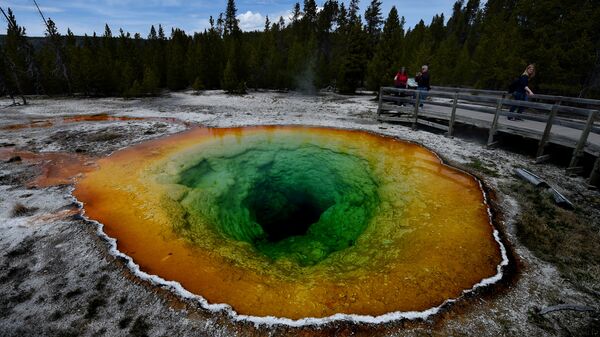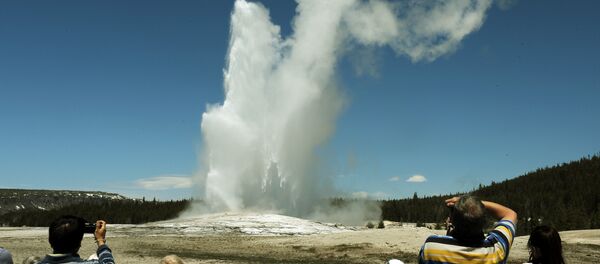There are growing fears that the usually dormant volcano, which has experienced thousands of tremors since June, could rumble back to life 630,000 years after its previous eruption sent ash and rock hundreds of miles across America.
Researchers analyzing minerals around the Yellowstone supervolcano at Yellowstone National Park have discovered that the changes in their temperature and composition only took a few decades, much faster than the centuries previously thought.
"There's no reason to think it could impact mass transport the way the Iceland eruption did nor would it have any effect on crops," National Geographic researcher Christy Till told Fox News.
"There is no evidence to suggest it could destroy mankind," she added.
According to a team of Bristol University scientists, volcanic super-eruptions may occur once every 17,000 years or so, which means with the two most recent such eruptions happening about 30,000 years ago, new ones may not be long in coming.
Salt Lake City, Cheyenne, Rapid City, Billings and Boise would also suffer in the event of an eruption.
However, Michael Poland, Scientist-in-Charge at the Yellowstone Volcano Observatory, has admitted that “we don’t know” if there’s enough magma beneath the surface to have a super eruption.
“The evidence suggests that a lot of the magma reservoir is actually solid, and about 50 percent of it is molten, so there may not be enough down there to have a super eruption,” he said.
Hidden deep under Yellowstone National Park, lies a supervolcano, which is able to spew more than 1,000 cubic kilometers of rock and ash at once — 2,500 times more material than erupted from Mount St. Helens in 1980.
An eruption like that could blanket most of the United States in a thick layer of ash and even plunge the Earth into a volcanic winter.
READ MORE: Red Alert: Europe's Only Supervolcano May Erupt Soon




